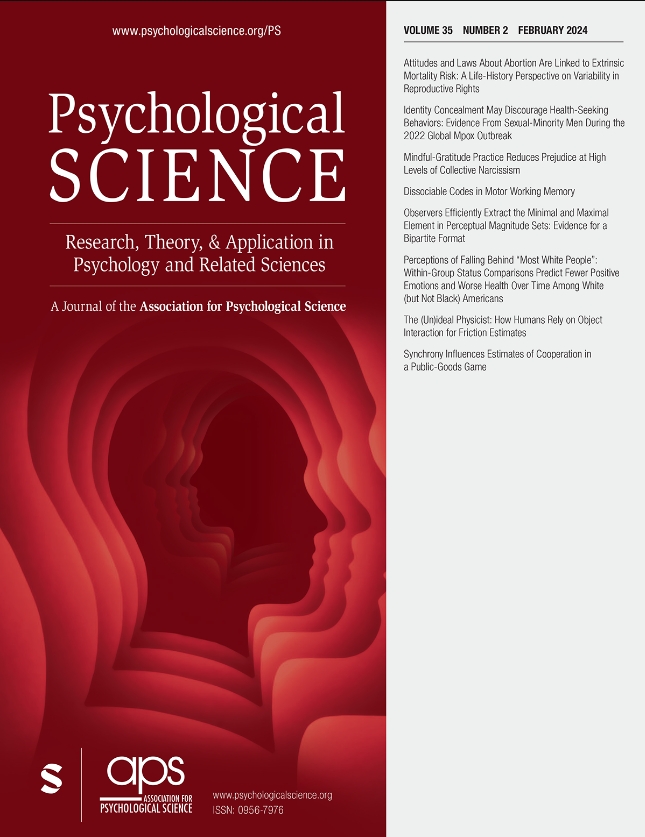Do We Become More Lonely With Age? A Coordinated Data Analysis of Nine Longitudinal Studies
IF 5.1
1区 心理学
Q1 PSYCHOLOGY, MULTIDISCIPLINARY
引用次数: 0
Abstract
Loneliness is a pervasive experience with adverse impacts on health and well-being. Despite its significance, notable gaps impede a full understanding of how loneliness changes across the adult life span and what factors influence these changes. To address this, we conducted a coordinated data analysis of nine longitudinal studies encompassing 128,118 participants ages 13 to 103 from over 20 countries. Using harmonized variables and models, we examined loneliness trajectories and predictors. Analyses revealed that loneliness follows a U-shaped curve, decreasing from young adulthood to midlife and increasing in older adulthood. These patterns were consistent across studies. Several baseline factors (i.e., sex, marital status, physical function, education) were linked to loneliness levels, but few moderated the loneliness trajectories. These findings highlight the dynamic nature of loneliness and underscore the need for targeted interventions to reduce social disparities throughout adulthood.随着年龄增长,我们会变得更加孤独吗?九项纵向研究的协调数据分析
孤独是一种普遍存在的体验,会对健康和幸福产生不利影响。尽管孤独感很重要,但明显的差距阻碍了我们全面了解孤独感在成年人一生中的变化以及影响这些变化的因素。为了解决这个问题,我们对九项纵向研究进行了协调数据分析,这些研究涵盖了来自 20 多个国家的 128,118 名 13 至 103 岁的参与者。利用统一的变量和模型,我们研究了孤独感的轨迹和预测因素。分析表明,孤独感呈 U 型曲线,从青年期到中年期递减,到老年期递增。这些模式在不同的研究中是一致的。一些基线因素(如性别、婚姻状况、身体机能、教育程度)与孤独感水平有关,但很少有因素能调节孤独感的轨迹。这些发现凸显了孤独感的动态性质,并强调有必要采取有针对性的干预措施,以减少整个成年期的社会差异。
本文章由计算机程序翻译,如有差异,请以英文原文为准。
求助全文
约1分钟内获得全文
求助全文
来源期刊

Psychological Science
PSYCHOLOGY, MULTIDISCIPLINARY-
CiteScore
13.30
自引率
0.00%
发文量
156
期刊介绍:
Psychological Science, the flagship journal of The Association for Psychological Science (previously the American Psychological Society), is a leading publication in the field with a citation ranking/impact factor among the top ten worldwide. It publishes authoritative articles covering various domains of psychological science, including brain and behavior, clinical science, cognition, learning and memory, social psychology, and developmental psychology. In addition to full-length articles, the journal features summaries of new research developments and discussions on psychological issues in government and public affairs. "Psychological Science" is published twelve times annually.
 求助内容:
求助内容: 应助结果提醒方式:
应助结果提醒方式:


